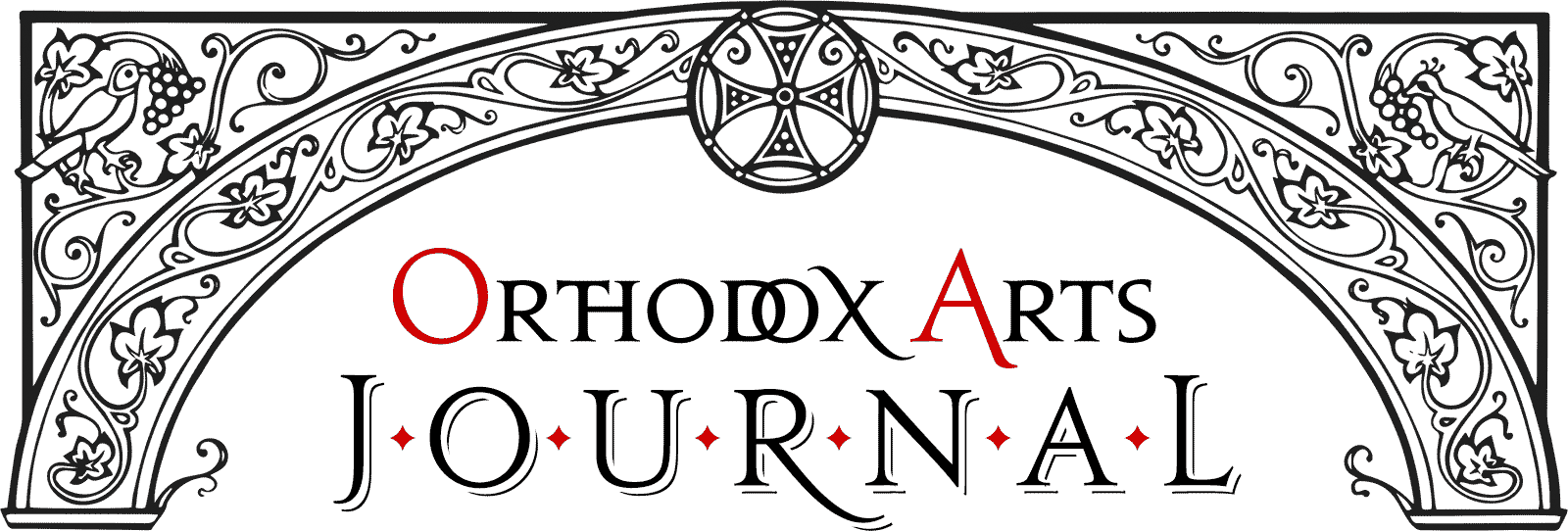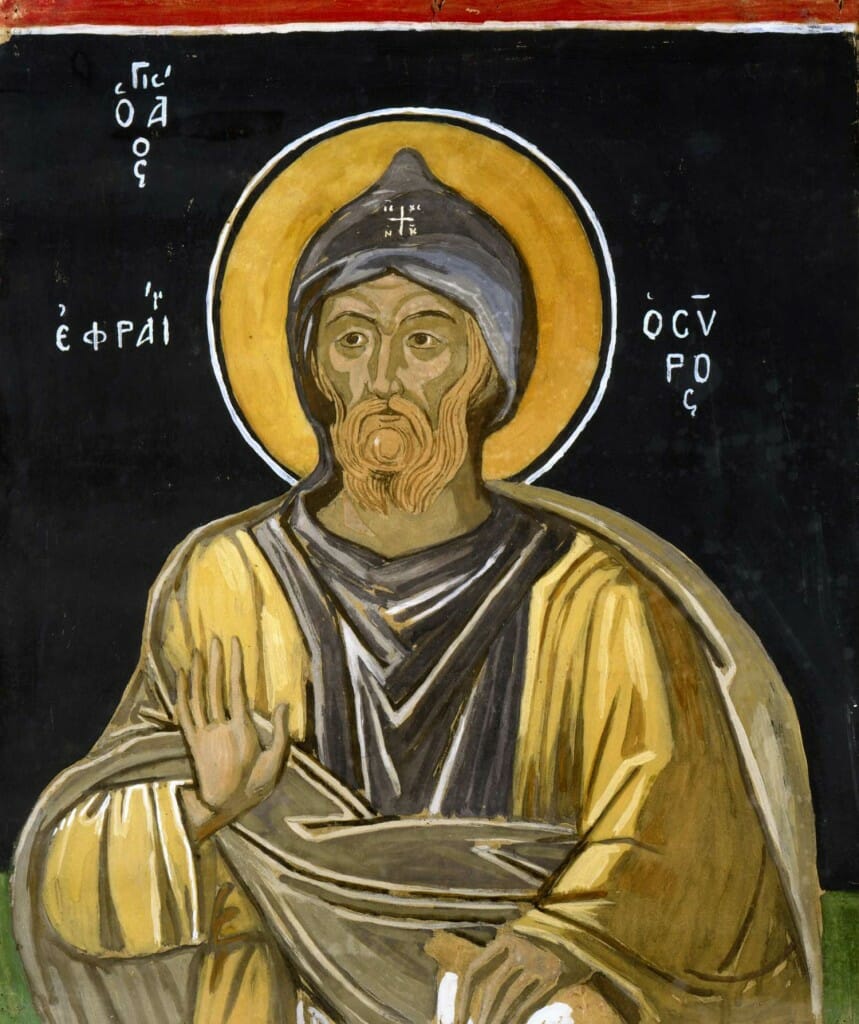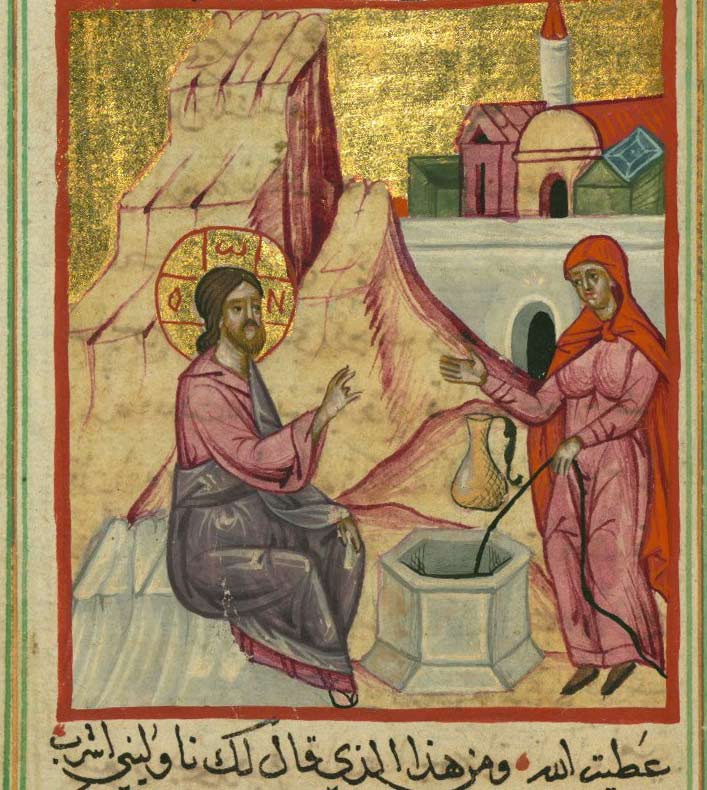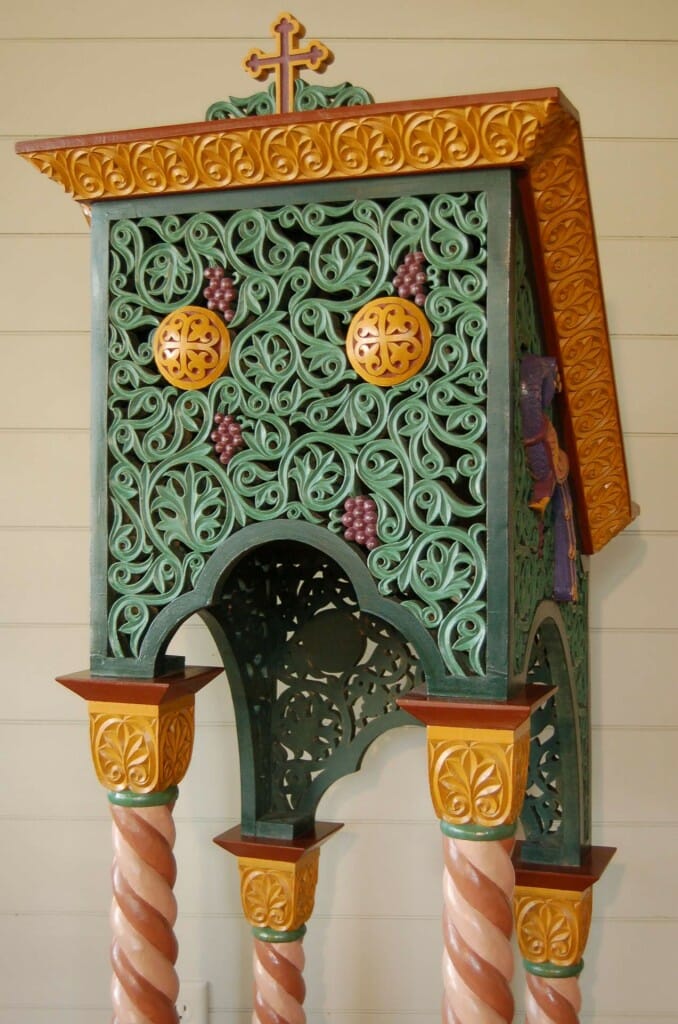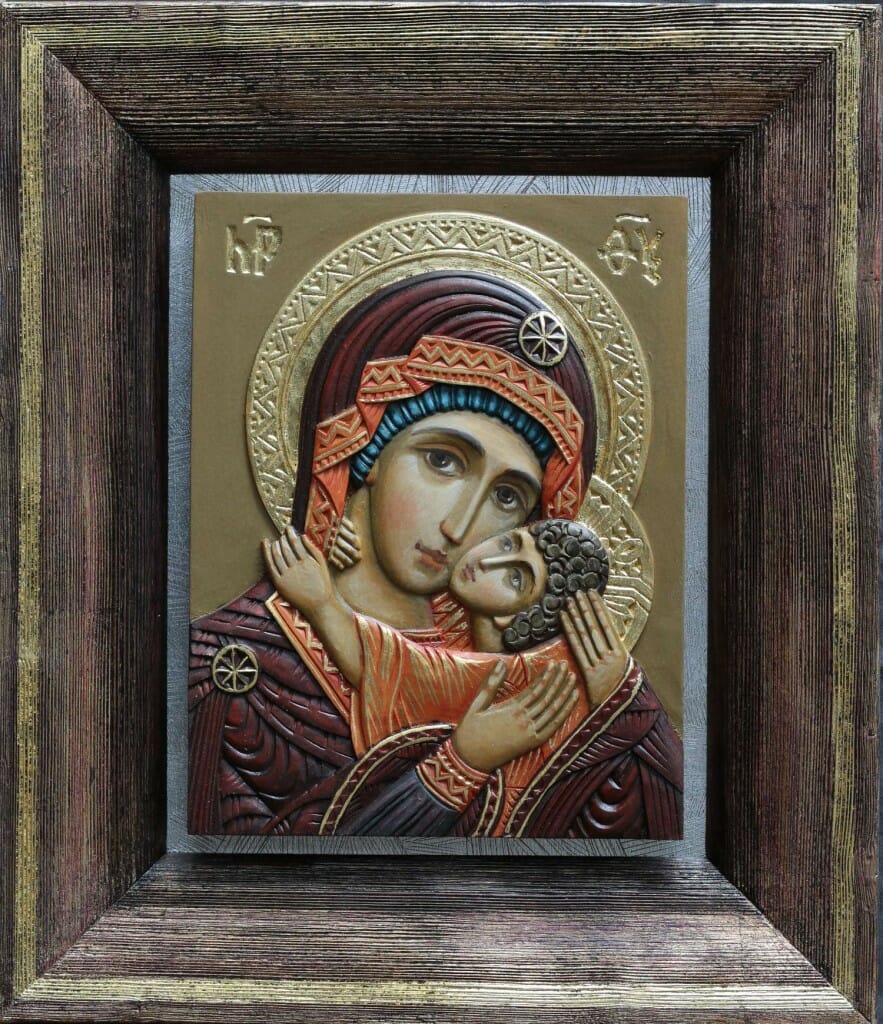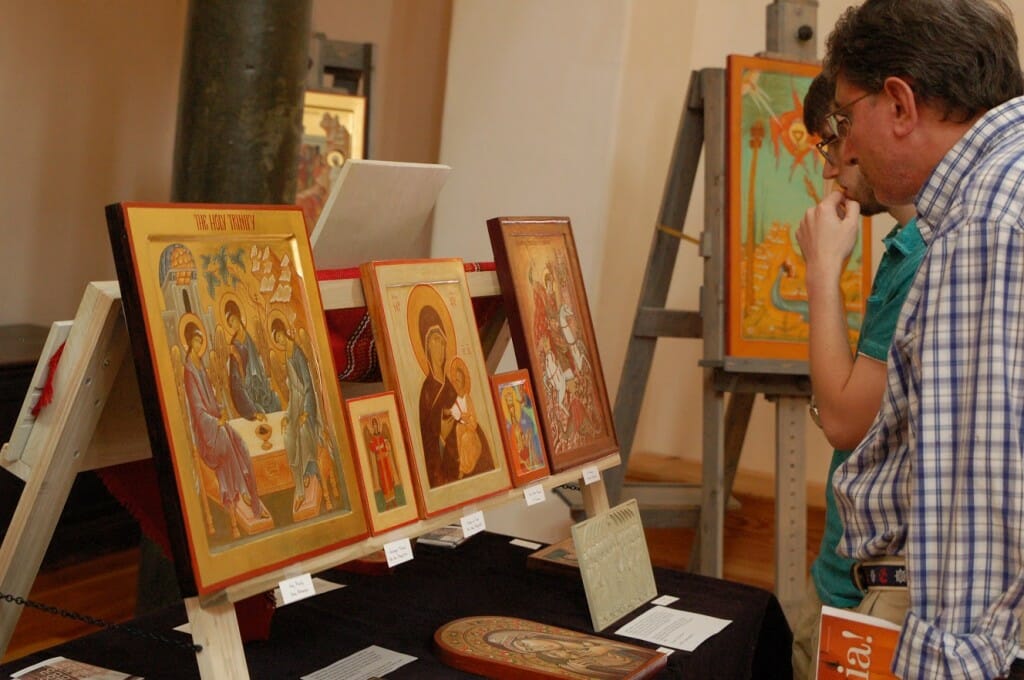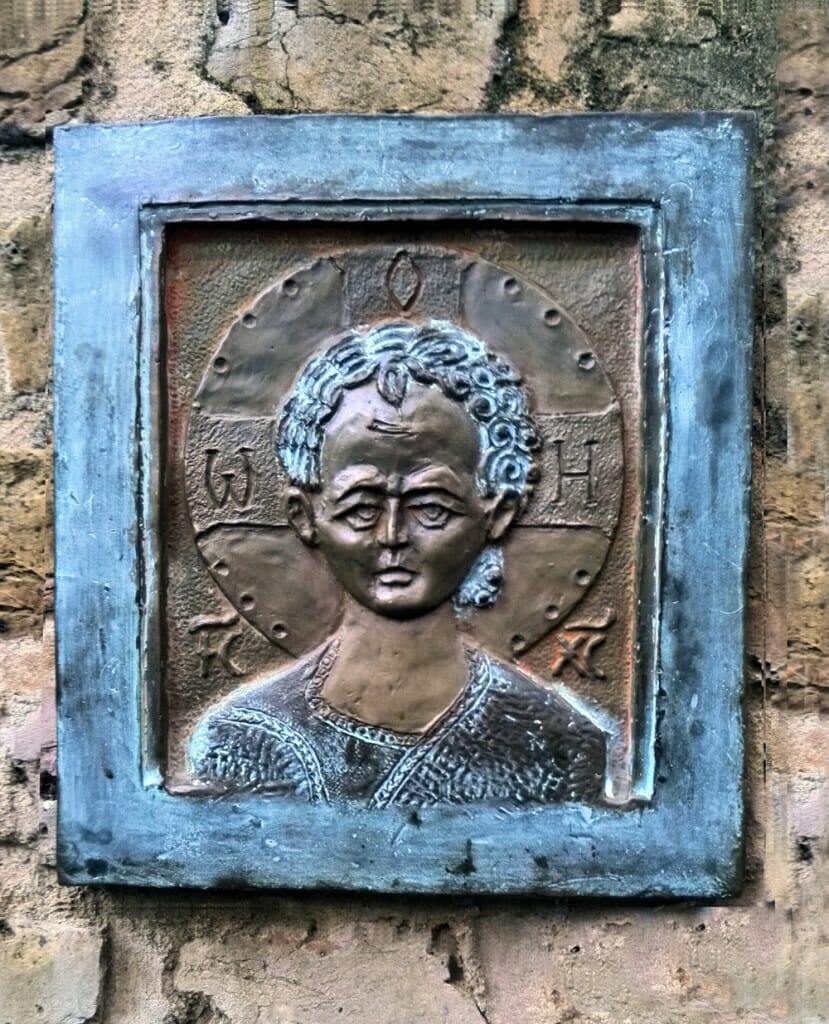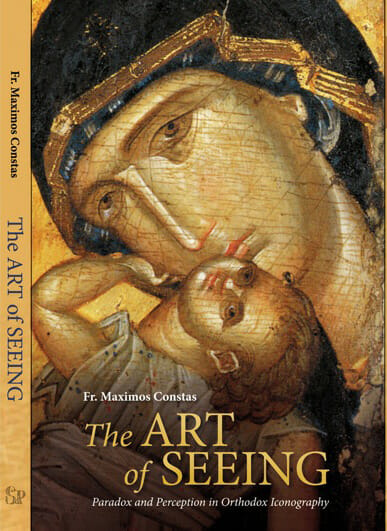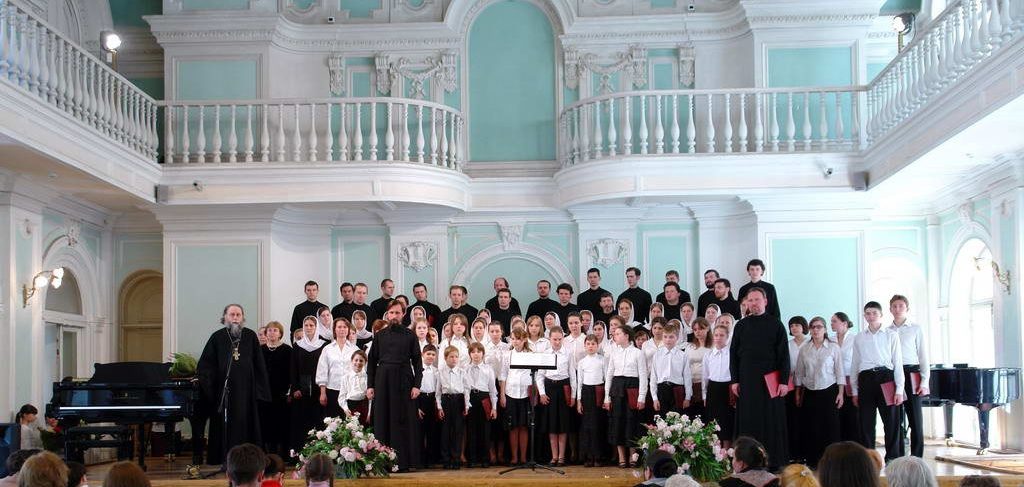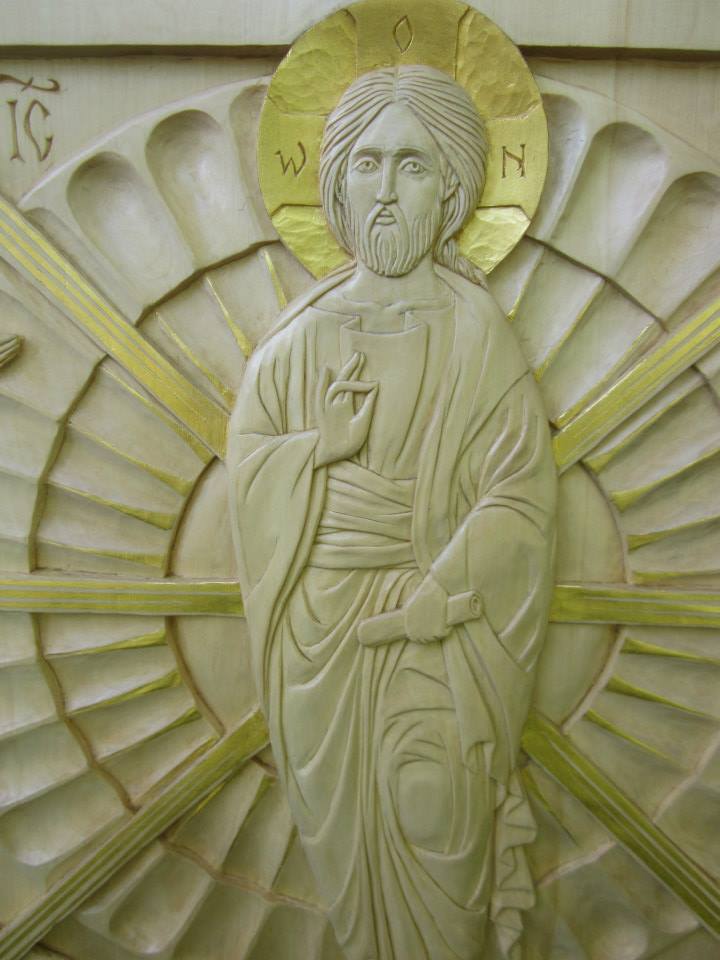Modernity and Tradition in the Religious Art of Spyros Papaloukas
Spyros Papaloukas (1892-1957) was a major Greek painter of the first half of the twentieth century. Almost a legend for some, he was an innovator of Greek landscape painting. Although not mainly a church iconographer, he holds a very particular position alongside Photis Kontoglou in contemporary liturgical arts. He was born in 1892, started…
Continue reading »The Samaritan Woman, Baptism and the Hexagon
A little while ago an iconographer wrote me to ask advice on what shape he should make the well in an icon of the Samaritan Woman, who is known in tradition as St-Photini. After answering him, I realized that this detail in the icon is a good example of how so much can be hidden…
Continue reading »The Question of Polychrome – Part 2: Painting a Byzantine Analogion
This is post 2 of 2 in the series “The Question of Polychrome for Liturgical Woodcarving” Andrew Gould looks at the role polychromy has played in historical liturgical arts and how it can be adapted to contemporary designs. The Question of Polychrome for Liturgical Woodcarving – Part 1 The Question of Polychrome – Part 2:…
Continue reading »The Question of Polychrome for Liturgical Woodcarving – Part 1
This is post 1 of 2 in the series “The Question of Polychrome for Liturgical Woodcarving” Andrew Gould looks at the role polychromy has played in historical liturgical arts and how it can be adapted to contemporary designs. The Question of Polychrome for Liturgical Woodcarving – Part 1 The Question of Polychrome – Part 2:…
Continue reading »Rashid and Inessa Azbuhanov: Revival and Modernity in Orthodox Carving
Rashid and Inessa Azbuhanov are recognized as forerunners in the rediscovery of the carved icon and we have featured their work here before. This time we present a feature interview with the Azbuhanov couple thanks to the kind collaboration of Paul Stetsenko who translated the whole interview from Russian into English for us. The Azbuhanovs carvings circulate in the…
Continue reading »‘Living Tradition’ Symposium in Charleston, SC – Videos Online
On May 23rd, iconographers Philip Davydov and Fr. Silouan Justiniano spoke at a symposium titled “Living Tradition: Painting Sacred Icons in the 21st Century”. The event was the first of its kind organized by the Orthodox Arts Journal. It was held at Holy Ascension Orthodox Church in Charleston, SC. The event focused on the question…
Continue reading »The Bronze Icons of Alex Aleksejevas
Aleksandras Aleksejevas is a Lithuanian Sculptor who now works our of the UK. He has been member of the Royal British Society of Sculptors since 2004 and also a member of the International Art Foundation of Moscow since 2000. He works in several mediums, though his favorite is bronze, and it is in this medium that he has…
Continue reading »Review of The Art of Seeing: Paradox and Perception in Orthodox Iconography by Fr. Maximos Constas
Fr. Maximos Constas, The Art of Seeing: Paradox and Perception in Orthodox Iconography. Alhambra, California: Sebastian Press, 2014. Pp. 263 + 73 color illustrations. Many readers of the Orthodox Arts Journal have some familiarity with the concept of symbol. Reader’s of Fr. Silouan Justiniano’s articles, for example, will know that contributors to the journal wrestle…
Continue reading »Preserving Traditions: A Thread of Succession Survives in Moscow
In recent months, discussions posted on various blogs and other social media have brought to light the ongoing quest of Orthodox church musicians in North America to define more clearly their vocation and sense of professional identity. A good deal of discussion has focused on the desirability and necessity of establishing an Orthodox choir school.…
Continue reading »The Transfiguration in Shadow.
Last year I was asked by a patron to carve a large icon of the Transfiguration. She said: “I am curious to see how you will do that.” I understood immediately what she meant, and her comment for me went to the core of what icon carving attempts to grapple with. So much of Orthodox theology, especially since St-Gregory of Palamas…
Continue reading »